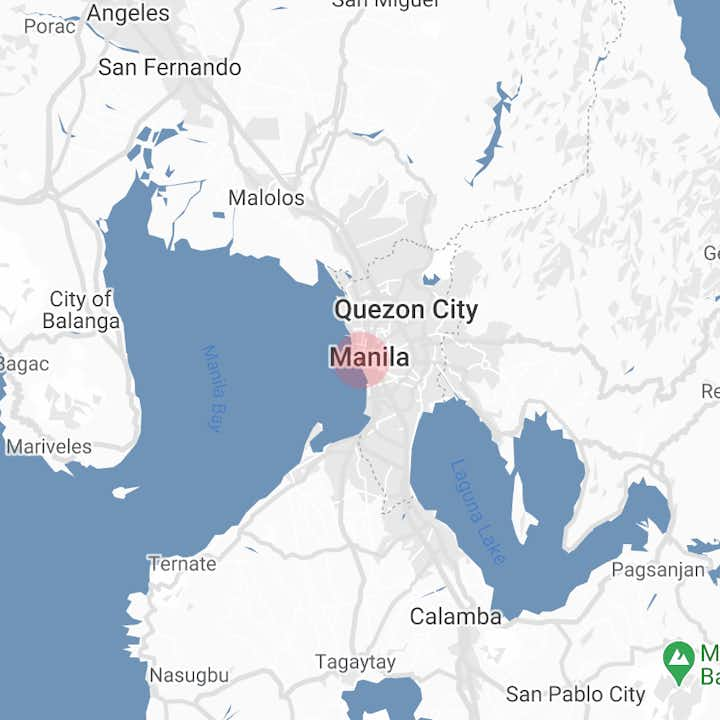

Information about Fort Santiago
Fort santiago.
Fort Santiago is the oldest Spanish bastion in the Philippines. Situated inside the walled city of Intramuros in Manila, the site witnessed many historical events of the Philippines.
The exact spot where Fort Santiago now stands was once a Muslim kingdom ruled by a chieftain named Rajah Sulayman. When the Spaniards landed in the Philippines in 1571, they destroyed the site and built a fortress instead, naming it after Spain’s patron saint, Saint James (Santiago in Spanish). The structure served as their defense fortress.
The original fort was made of logs and soil but was torn down by Chinese pirates under the command of Limahong in 1574. It was rebuilt using carved stones and mud cement between 1589 and 1592, but a terrible earthquake in 1645 damaged most parts of the structure again. The Spaniards then reconstructed the fortress from 1658 to 1663.
In 1762, the British came and ruled until 1764, using Fort Santiago as their headquarters. The Americans then arrived in 1778 and renovated the fort which became a U.S Army Philippines Division Command Center.
And in 1942 during World War II, the Japanese conquered the Philippines and made use of the fort as their military base and prison. It is said that they have imprisoned and tortured about 2,500 to 3,000 Filipinos and Americans in the site.
In 1945, the U.S Liberation Forces came and fought against the Japanese, causing severe damage to the fort. It then served as a depot of the U.S. Transportation Corps later on.
The U.S Military turned over the bastion to the Philippine Government in 1946, and it was announced as a Shrine of Freedom in 1950. A year later, the National Park Development Committee restored the fort and transferred it to the Intramuros Administration in 1992.
How to get there
The fastest and most accessible way to reach the fort is by a guided tour of Old Manila, but you can also go on your own by public transport. If you're taking the LRT, get off at Central Station and take a quick walk to the Fort Entrance, or get off at Carriedo Station and catch a jeepney to Mabini.
Best time to visit
It can be visited anytime but it’s best to go during dry season. Fort Santiago is open daily from 8 a.m. to 11 p.m.
Entrance fee
There is a minimal entrance fee to Fort Santiago for adults. For students, senior citizens, and persons with disabilities, there is a discount.
Popular Tours to Fort Santiago
Amazing 12-day nature & beaches tour to bohol, cebu & boracay package from manila, relaxing 3-day richmonde hotel iloilo tour package with airport transfers, ultimate 1-month philippine adventure tour package to boracay, palawan, siargao, bohol, cebu, baguio, what can you see inside fort santiago, what is the most visited part of fort santiago, is there a museum inside fort santiago, attractions nearby.
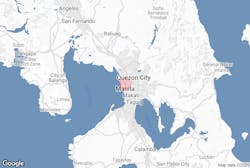
Manila Chinese Cemetery

University of Santo Tomas

Greenhills Mall

San Sebastian Basilica

Sto. Niño de Pandacan Parish
Our best tours.

Top Tours in the Philippines
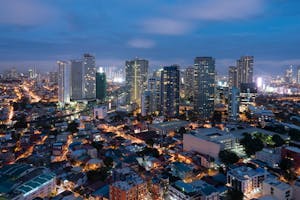
Manila Tours & Activities
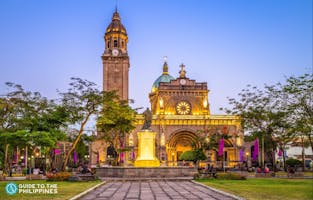
Intramuros Tours

Philippines Vacation Packages

Download the Philippines’ biggest travel marketplace to your phone to manage your entire trip in one place
Scan this QR code with your phone camera and press the link that appears to add the Philippines’ biggest travel marketplace into your pocket. Enter your phone number or email address to receive an SMS or email with the download link.
Top things to do in the Philippines
Discover all the adventures you can experience in the Philippines
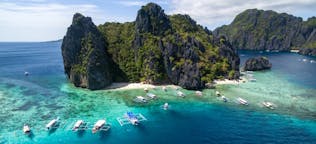
Philippines Tour Packages

Boracay Island

Bohol Island
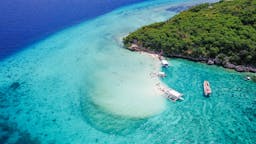
Cebu Island
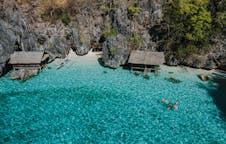
Coron Palawan
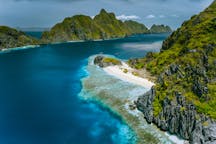
El Nido Palawan
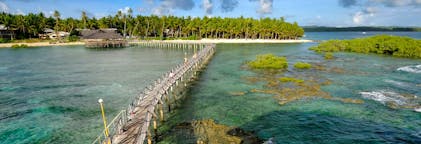
Siargao Island
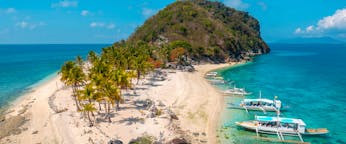
Iloilo City and Nearby
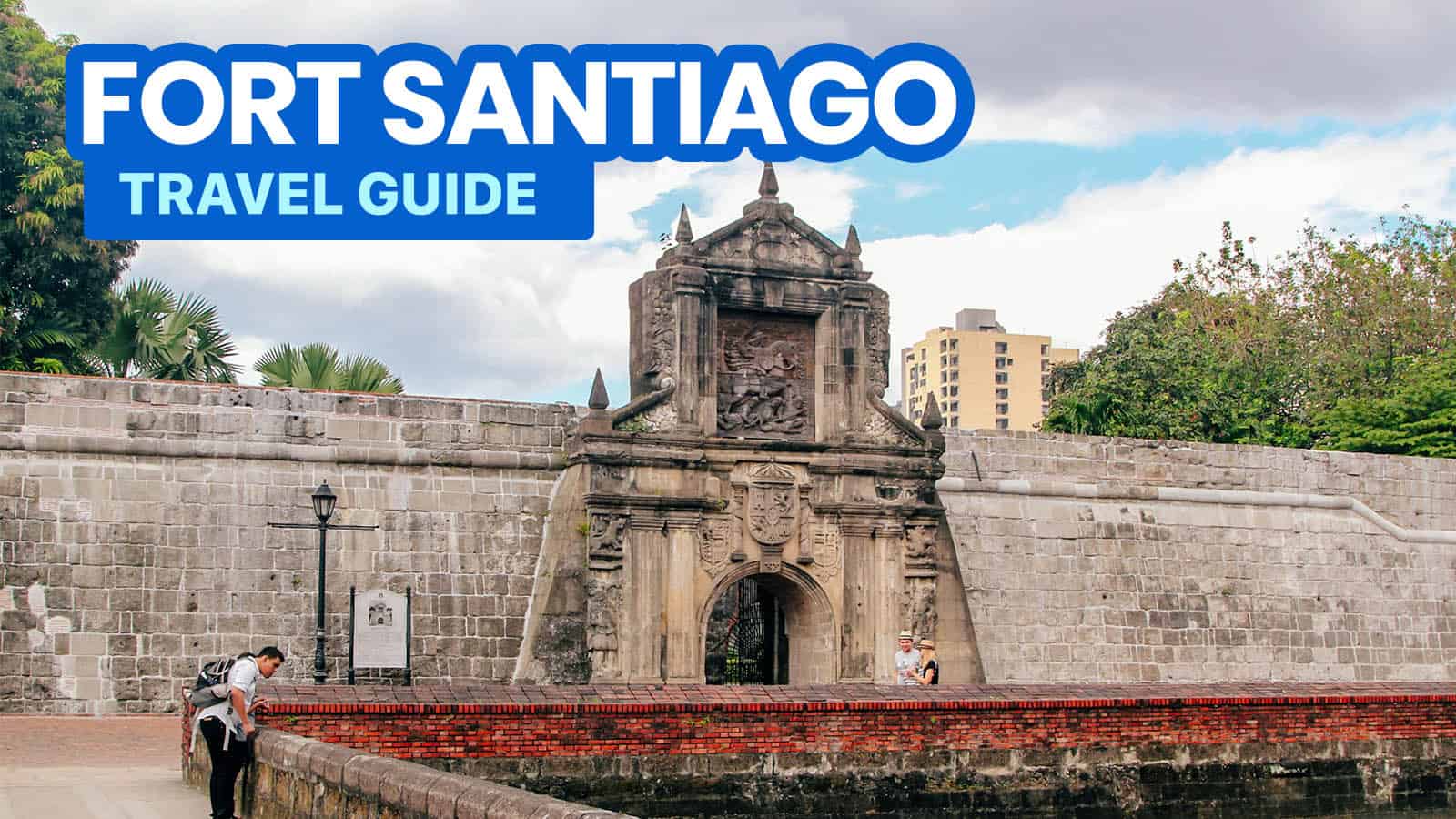
FORT SANTIAGO, MANILA: Travel Guide + New Normal Guidelines

Finally, after so many months of being closed to the public because of the COVID-19 pandemic, Fort Santiago has been reopened.
Fort Santiago is one of the most common destinations for educational tours or field trips. I have scoured the nooks and crannies of Fort Santiago a few times already, once doing a photo walk for my Photography Class back in college.
Spearheaded by Miguel Lopez de Legazpi, it was constructed in the early 1590s as a fortress for the then flourishing city of Manila. It faced many destructions and reconstructions, but some structures remain strong throughout the centuries.
The fort is recognized as a National Cultural Treasure in 2014 and a National Shrine and National Monument in 1951. The dungeons and the museum are just two of the many attractions you’ll see inside the historical fort.
Here are some helpful bits of info that you might want to know before you go during the new normal.
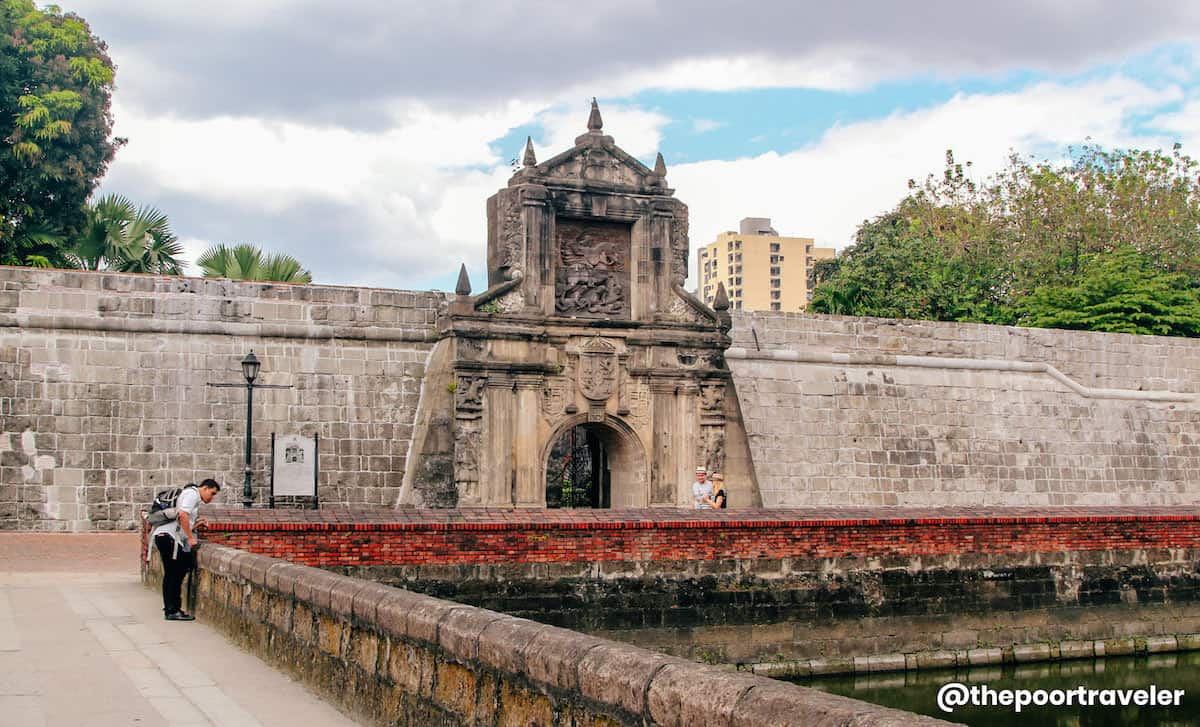
WHAT'S COVERED IN THIS GUIDE?
New Normal Requirements and Guidelines
Below is the list of the general new normal guidelines rules when touring around Intramuros.
- No Mask, No Entry. When leaving your house, make sure that you’re wearing a face mask properly. Your face mask should be covering your nose and reaches the bottom of your chin. Some establishments also require the wearing of face shields.
- Maintain physical distancing. Keep a 1-meter distance between you and others at all times.
- Observe proper hand hygiene. If soap and water are available, wash your hands frequently and thoroughly. If not, use an alcohol-based sanitizer to sanitize.
- Do not touch your eyes, nose, and mouth. Avoid touching your eyes, nose, and mouth especially if your hands are not sanitized.
- Practice respiratory etiquette at all times. If you’re sneezing or coughing, make sure to use a tissue or the inner portion of your elbow to cover your nose and mouth. Then, dispose of the tissue properly and wash your hands.
- A limited number of people is allowed inside establishments. Each establishment has a maximum capacity at a time. Queue properly and follow provided floor markings and physical barriers to maintain physical distancing.
- Mandatory temperature and symptoms screening. All guests must undergo a temperature check and fill out a health declaration form at the entrance. Those with fever or flu-like symptoms and a history of exposure shall be refused entry.
- Follow mandatory sanitizing protocols at entrances. Hand sanitation and footwear disinfection stations are available at the entrance of establishments. Make sure to follow these protocols before entering.
- Observe the maximum allowed passengers. Only 1 person is allowed in the front passenger seat and there’s a maximum of 2 per row for front-facing seats.
- Download StaySafe.PH app and sign up before entering the sites. Guests are required to register their visit on the StaySafe.PH app before entering the sites for contact tracing purposes. More info here: HOW TO USE STAYSAFE APP!
What are the operating hours?
Before the pandemic, Fort Santiago is open daily from Monday to Sunday, 8:00 AM – 11:00 PM. However, it has changed its operating hours, following the “new normal” protocols. Starting February 17, 2021, these will be the opening hours:
- 9:00 AM – 7:30 PM Weekdays Last entry: 6:00 PM
- 9:00 AM – 8:30 PM Weekends Last entry: 7:00 PM
- The last entry is at 6:00 PM (Weekdays) and 7:00 PM (Weekends).
- The maximum capacity is 150 pax at a time.
How much is the ticket?
- P75: General Admission
- P50: Children/Students/PWDs
When is the best time to visit?
Weekends and holidays are expected to be much more crowded than weekdays. If these are the only feasible dates for you, just go there early.
Based on my previous visits, both weekends and weekdays, “crowded” looked like weekday foot traffic of other popular tourist attractions in Manila.
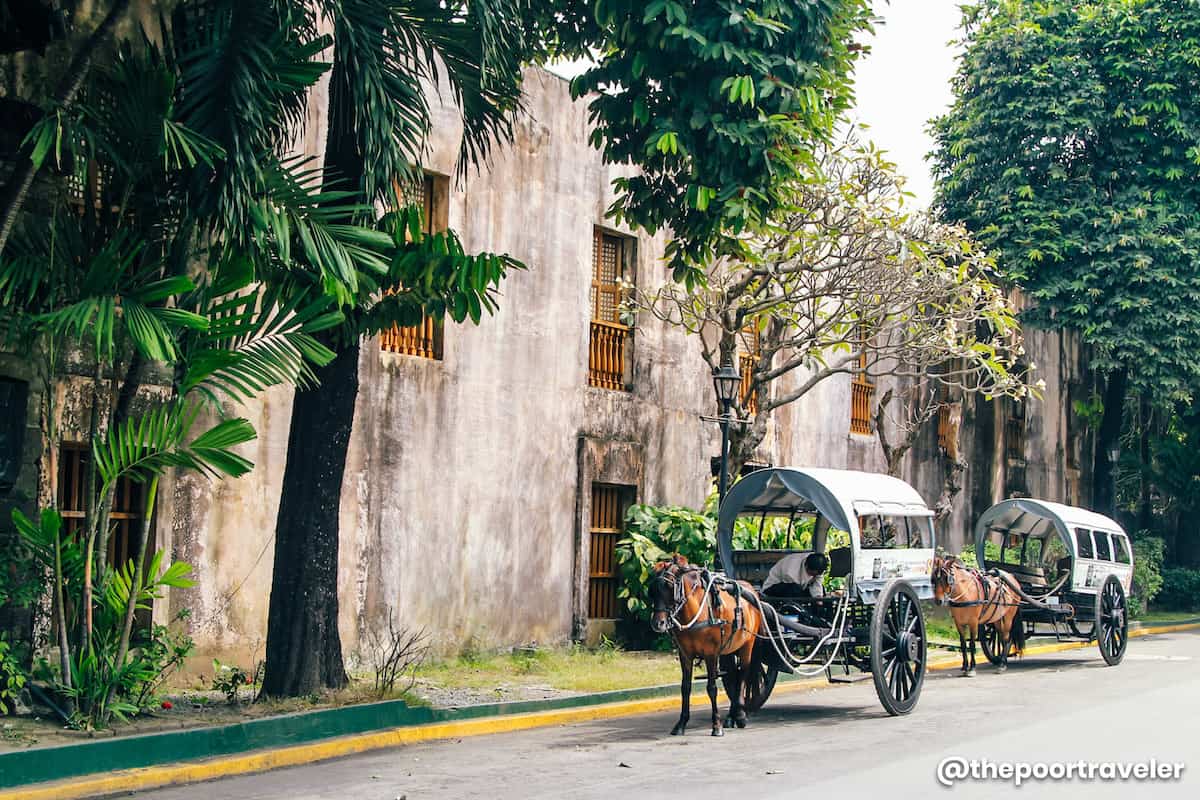
How to get to the Fort Santiago?
Fort Santiago is located in Intramuros in the city of Manila.
If you take the LRT 1, you can get off at any of these three stations: Central Station, Carriedo Station, or Doroteo Jose Station. The main entrance to Fort Santiago is through Plaza Moriones at Sta. Clara Street corner General Luna Street.
- If you get off at Central Station, you can reach Intramuros on foot. Your landmark is the Manila City Hall. Cross to the other side using the underpass. Ask around how to get to Plaza Moriones.
- If you alight at Carriedo Station, take a Pier-bound jeepney and tell the driver to drop you off at Intramuros. The fare is P8-10. Travel time is about 10 minutes, depending on the traffic condition.
- If you choose Doroteo Jose Station, ride a Baclaran/Mabini jeepney and tell the driver to drop you off at Intramuros. The fare is P8-10. The travel time is about 15 minutes, depending on the traffic condition.
What are the attractions inside Fort Santiago?
These sites are marked and have brief descriptions, explaining the historical value.
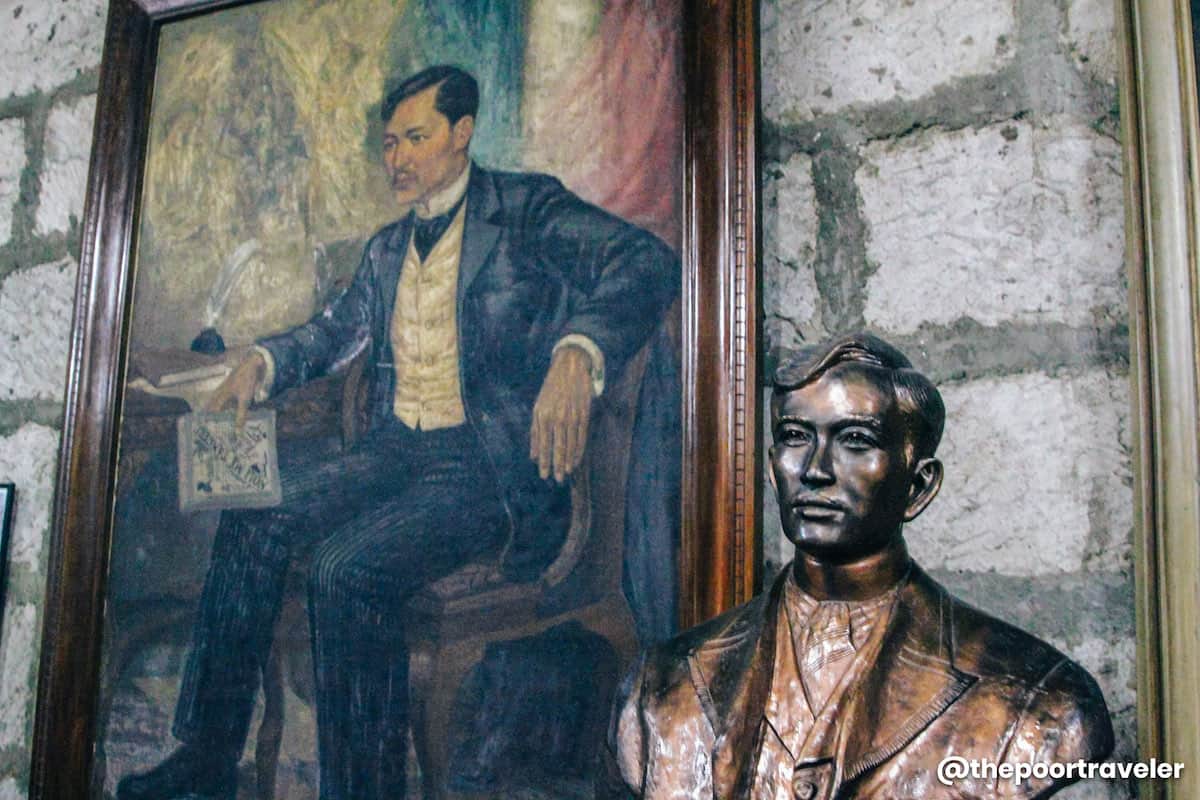
- Plaza Moriones
- Baluartillo de San Francisco Javier
- Ruins of the American Barracks
- Plaza De Armas
- Jose Rizal Shrine/Museum
- Rajah Sulayman Theatre
- Postigo de la Nuestra Senora de Soledad
- The White Cross
- The Dungeons of Fort Santiago
- Baluarte de Santa Barbara
- Ruins of The Almacenes Reales
What are the top attractions?
- Shrine of Rizal
- Rizal’s footsteps to his actual execution ground
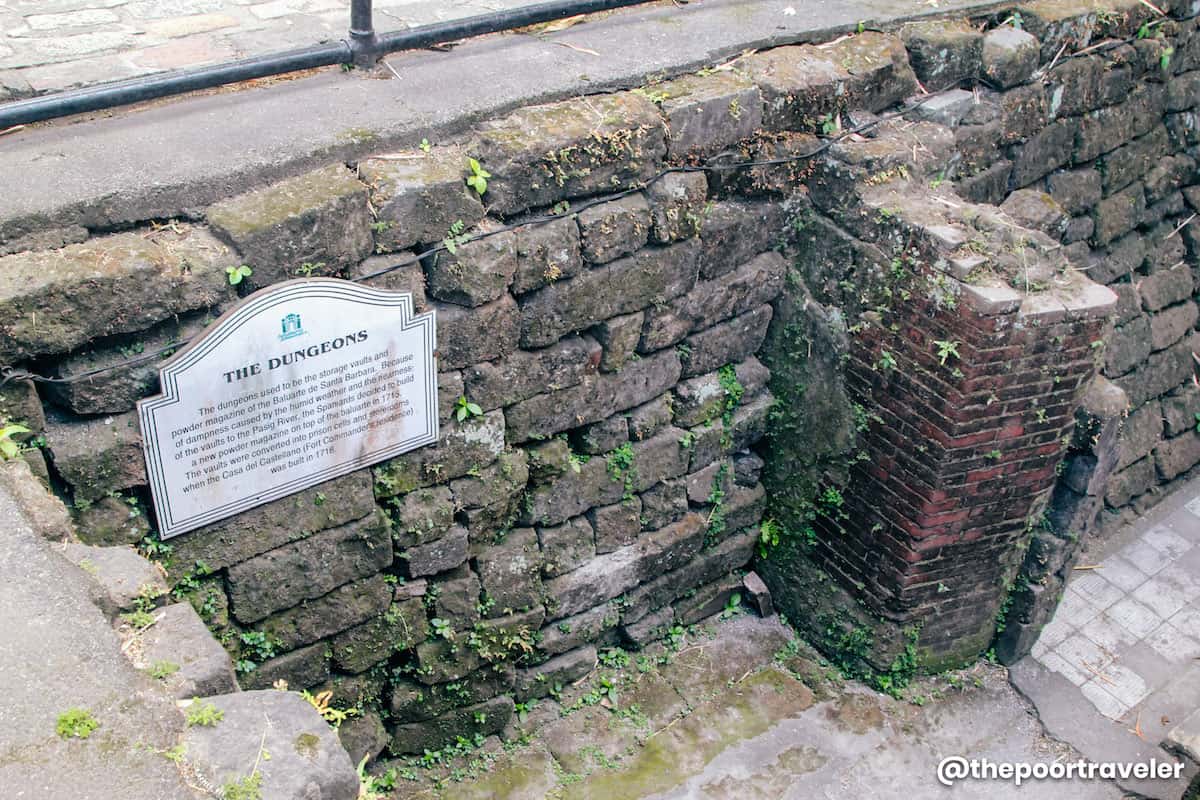
How do I make the most of my visit?
Thoroughly understand the place by knowing more about every stop. The marked spots have descriptions. There’s even a museum dedicated to Dr. Jose Rizal.
Your visit will be for nothing if you haven’t grasped the historical significance of the place. If you don’t mind enclosed spaces, don’t forget to explore the dungeons, which are recently opened to the public.
What are the rules and regulations?
Generally, respect the place and other visitors’ space. Don’t cause anything that will disrupt the peace of others. Do not litter, vandalize, or damage the structures.
If you are decided to go inside the dungeons, here are the rules:
- Be mindful of your surroundings and the structure height clearance to avoid accidents.
- Observe silence. You are on hallowed ground.
- Turn on your flashlights.
- Do not leave trash and belongings.
- Do not vandalize.
- Only ages 13 and above are allowed to enter. Elders must be assisted.
- Enter only with the supervision of our security personnel.
- Maximum of ten guests only at a time.
- Wait for the personnel security to enter first.
- No teasing or causing panic.
- No overstaying or loitering.
- No entry for any person with heart and/or mobility issues.
What are the nearby attractions?
- San Agustin Church
- Manila Cathedral
- Casa Manila
- Rizal Park/Luneta Park
- National Museum Complex
Other Tips or Reminders
- Wear comfortable clothes.
- Secure your belongings. The company will not be responsible for any lost items inside the museum.
- Please read the warning signs. Strictly follow the rules and guidelines at all times.
Where can we contact the management for inquiries?
You may contact the Intramuros Administration office, which is under the Department of Tourism.
- Office Address: 5th Floor Palacio del Gobernador, General Luna Street cor. Aduana Street, Intramuros, Manila
- E-mail Address: [email protected] / [email protected]
- Contact Numbers: (02) 527-3138 (Tourism Promotions Division for events, tour inquiries, and other marketing-related activities); (02) 527-3096 and (02) 527-9012 (Business Management Division for venue rentals and photoshoots)
- Official Website: http://intramuros.gov.ph
- Official Facebook Page: Intramuros Administration
Top Manila Hotels
Here are some of the top hotels in the city of Manila, as scored by Agoda customers:

- Red Planet Manila Binondo. Check Rates & Photos! ✅
- OYO 152 Sangco Condotel. Check Rates & Photos! ✅
- Heroes Hotel. Check Rates & Photos! ✅
- Red Planet Manila Bay. Check Rates & Photos! ✅
- Sheraton Manila Bay. Check Rates & Photos! ✅
- Winford Manila Resort. Check Rates & Photos! ✅
- The Luneta Hotel. Check Rates & Photos! ✅
Search for more Manila Hotels!

More Tips on YouTube ⬇️⬇️⬇️
Is this post helpful to you?

Related Posts:
- MNL Boutique Hostel: Where to Stay in Makati, Philippines
- 15 CHEAP BUT AWESOME Destinations Near MANILA
- 8 Unusual Cemeteries in the Philippines
- The Linden Suites Ortigas: Where to Stay in Manila (Splurge Option)
- WHERE TO STAY IN MANILA: Top 10 Budget Hotels
- NATIONAL MUSEUM OF NATURAL HISTORY in MANILA: Guide for First-Timers
- 5 PLACES NEAR MANILA to Visit this Christmas Season
- Coupon TAXI RATES: NAIA Terminal to Provincial Destinations

- Recent Posts
- 2024 STILTS CALATAGAN Beach Resort Travel Guide with Itinerary & Budget - 7 April 2024
- TOKYO SKYTREE TRAVEL GUIDE: Know Before You Visit! - 30 March 2024
- 37 BORACAY TOURIST SPOTS & Things to Do (with Prices!) - 6 November 2023
Featured On

We heard you!
Your comment is now queued for moderation! We’ll try to get back to you soonest. While waiting, follow us on these channels.
Subscribe on Youtube! Follow us on Instagram!


Visiting Fort Santiago in Manila – Complete Guide!
Fort Santiago, located in the heart of Manila’s historic Intramuros district, is a symbol of the Philippines’ rich and turbulent history. It’s a must-visit in Manila, and you should plan to spend about one hour.
Plan Your Visit to Fort Santiago!
It can be very hot! make sure to use plenty of sun cream and bring water!
Opening Hours and Ticket Prices
Fort Santiago welcomes visitors to experience a glimpse of the past, and it’s always good to plan for a hassle-free visit.
Fort Santiago is open daily from 8 am-10 pm (last entry 8 pm), and Saturday/Sunday from 6 am to 10 pm (last entry 8:30 pm).
The entrance fee is PHP 75 for adults/regular and PHP 50 for students and senior citizens.
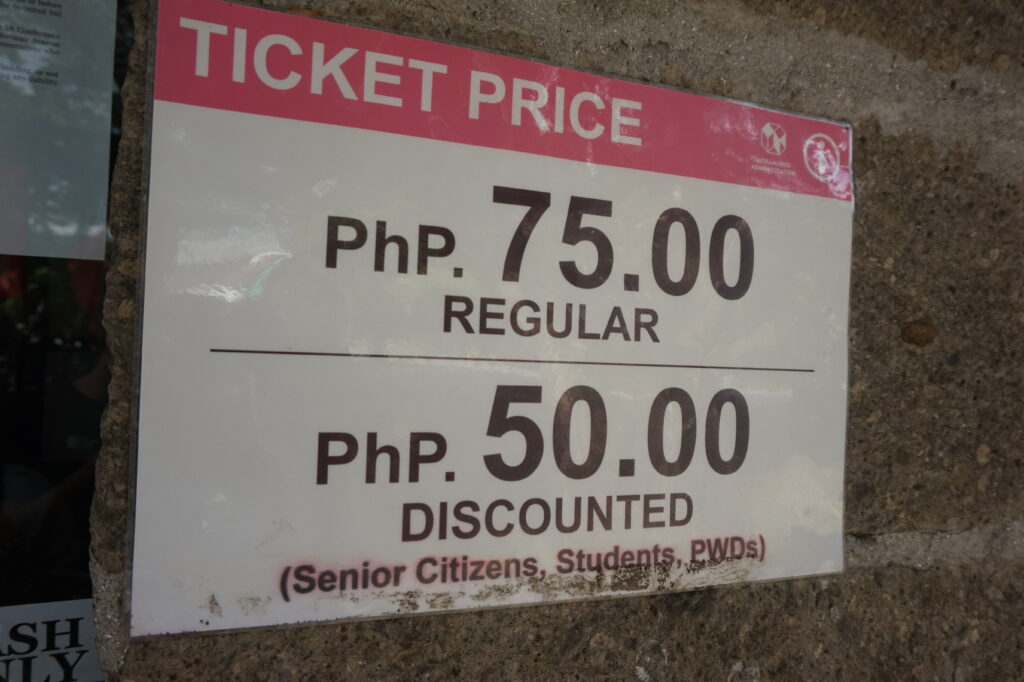
Best Time to Visit Fort Santiago
The ideal time to visit Fort Santiago is during the dry months, which run from December to May. This season offers more favorable weather conditions for exploring the fort. To avoid the heat and crowds, it’s best to visit early in the morning or late in the afternoon. This will give you a more serene experience of the fort’s historical ambiance.
However, Fort Santiago is still great to visit any time of the year.
How to Reach Fort Santiago
Fort Santiago can be accessed through different means. If you are using public transportation, you can take the Light Rail Transit (LRT) to Central Terminal Station and then walk shortly to Intramuros. If you are driving, there are available parking spaces near the fort. Taking a taxi/Grab is often the most convenient, but be aware that Manila traffic can be extreme!
Several guided tours include Fort Santiago in their itinerary, which is a convenient way to reach the site while learning about its history. Some tours also offers going by bicycle, a great way to get around the intramuros district. But if you want to decide how long your are at each sight then I recommend you dont go with a tour.
Exploring the Main Attractions of Fort Santiago
Fort Santiago is part of Intramuros. Read our complete Intramuros guide here!
Must-See Highlights and Historical Significance
Visitors can explore the key attractions inside Fort Santiago, such as the Rizal Shrine, which is dedicated to the national hero, Dr. Jose Rizal, and the historic dungeons. The walls and gates of the fort have stories to tell, bearing silent witness to significant events in Philippine history.
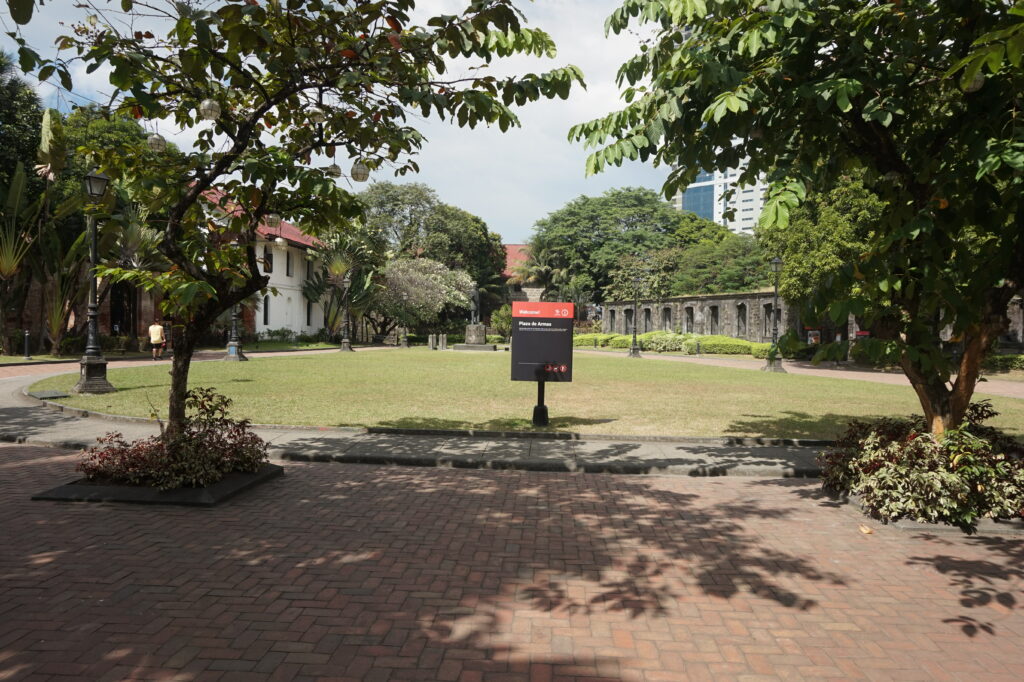
What to Do During Your Visit
Fort Santiago offers a variety of activities such as leisurely strolls along the manicured gardens, reenactments of historical events, and exploration of museum exhibits. Guided tours are also available that provide a detailed insight into the fort’s historical significance.
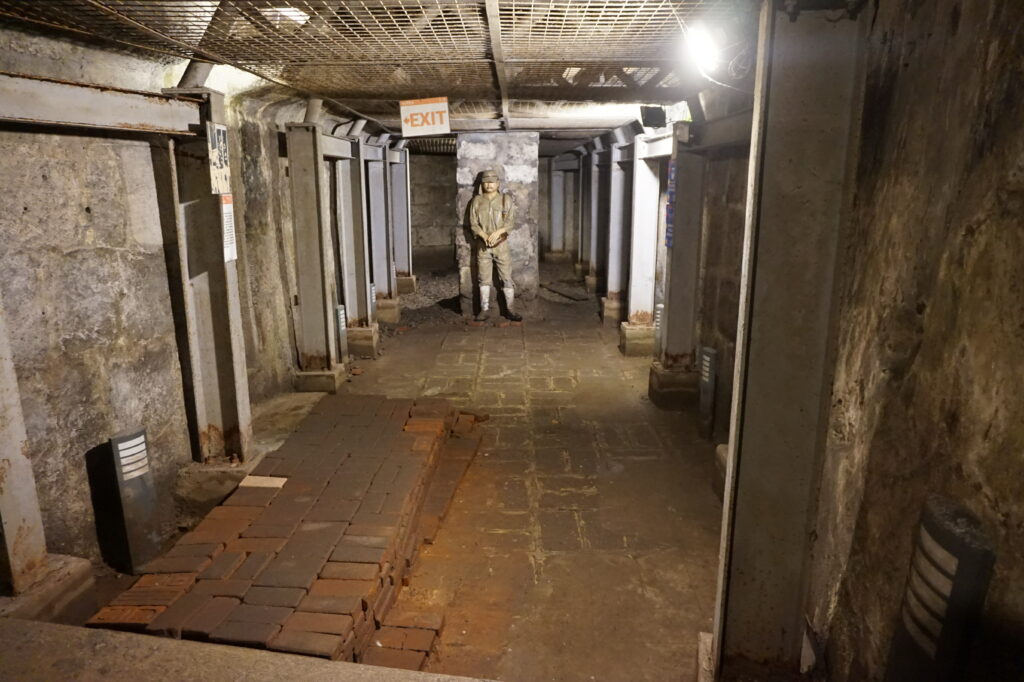
Making the Most of Your Visit to Fort Santiago
To make the most of your visit, it is recommended to start early and explore the place without the crowds. Make sure to wear comfortable walking shoes and carry a water bottle to stay hydrated. Don’t miss capturing stunning photographs of the fort’s architecture and scenic views.
Visitor Etiquette and Guidelines
Visitors must respect the rules and regulations to maintain the sanctity and integrity of the fort. Generally, eating inside the premises is not allowed. Visitors are expected to follow the guidelines for photography, noise levels, and littering to maintain the cleanliness and dignity of the site.

Exploring Nearby Attractions in Manila
A trip to Fort Santiago can be enhanced by visiting other nearby attractions in Intramuros, such as the Manila Cathedral and the historic walls of Intramuros. The Rizal Park and the National Museum complex are also worth visiting to complete your historical tour of Manila.
Is Fort Santiago Worth Visiting?
Fort Santiago is not just a typical tourist destination; it is a voyage into the core of Philippine history and culture. The walls of this ancient fortress narrate tales of courage, heartbreak, and the indomitable nature of the Filipino spirit. Therefore, it is a must-visit place for those who wish to learn about the Philippines’ diverse and fascinating past.
If you have one day, or just some hours in Manila then Fort Santiago should be one of the sights you visit!
Similar Posts
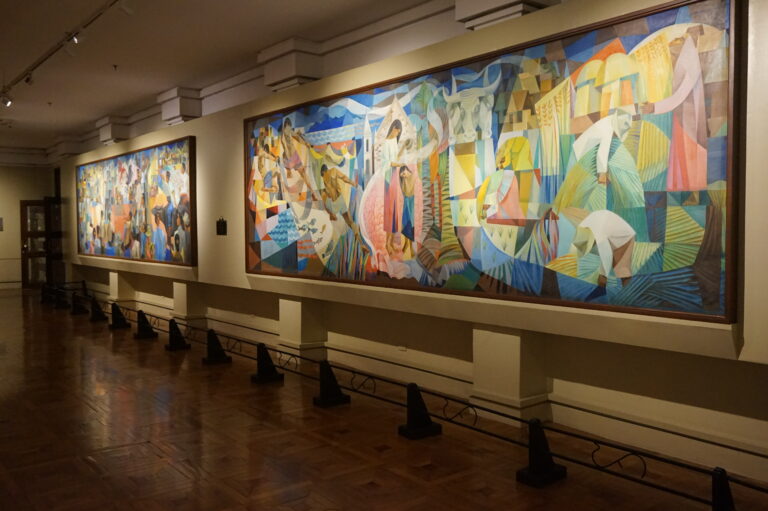
Complete Visitor Guide to the National Museum of Fine Arts Manila
Nestled in the heart of Manila, the National Museum of Fine Arts is a treasure trove of Filipino heritage, housing invaluable artworks and historical artifacts. It offers visitors an unparalleled glimpse into the rich cultural legacy of the Philippines. This guide will provide you with everything you need to know to have a fulfilling experience…
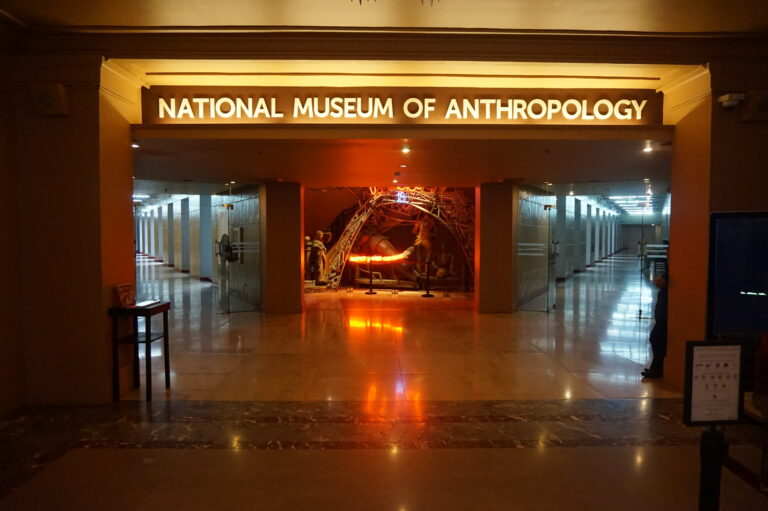
Complete Visitor Guide to the National Museum of Anthropology – Manila, Philippines
The National Museum of Anthropology in Manila is an important symbol of the rich cultural heritage and history of the Philippines. Located in the heart of the bustling capital city, the museum provides visitors with a deep understanding of the diverse tapestry of Filipino life, traditions, and civilizations that have shaped the nation. This comprehensive…
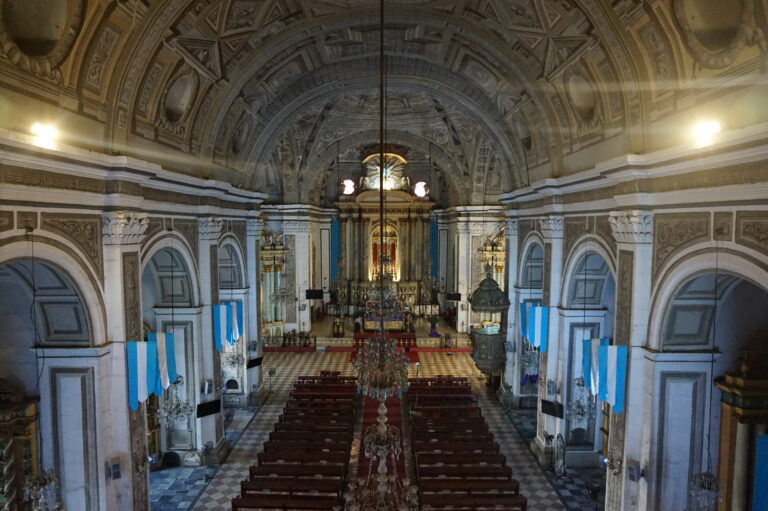
San Agustin Church Manila – Travel Guide!
The San Agustin Church in Manila, Philippines is a magnificent example of baroque architecture and a reminder of the country’s colonial history. As the oldest stone church in the Philippines, it is a UNESCO World Heritage site. It’s also one of the very few buildings in Manila that survived the Battle of Manila. This guide…
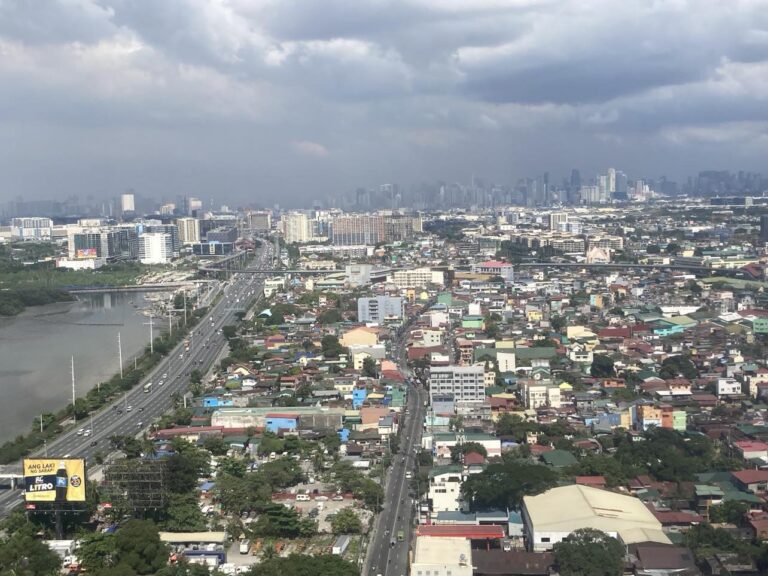
Manila For Digital Nomads – My Experience Staying In Manila For One Month
When I made the decision to spend a month in Manila as a digital nomad, I knew I was in for an unconventional adventure. Manila is not a typical digital nomad hotspot like Bali, Chiang Mai, or Siargao, but that’s what made it more intriguing for me. I had to change my flight anyways in…
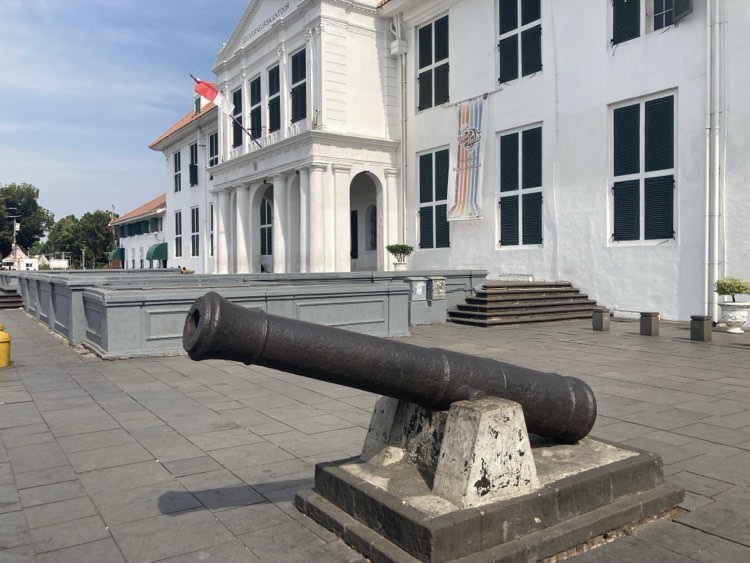
Jakarta History Museum Guide
Jakarta is a city that seamlessly blends the past with the present, and it has a wealth of stories to share. For those interested in learning about its history, the Jakarta History Museum is the perfect place to visit. Located right in the heart of the iconic Fatahillah Square, this museum is a must-visit for…
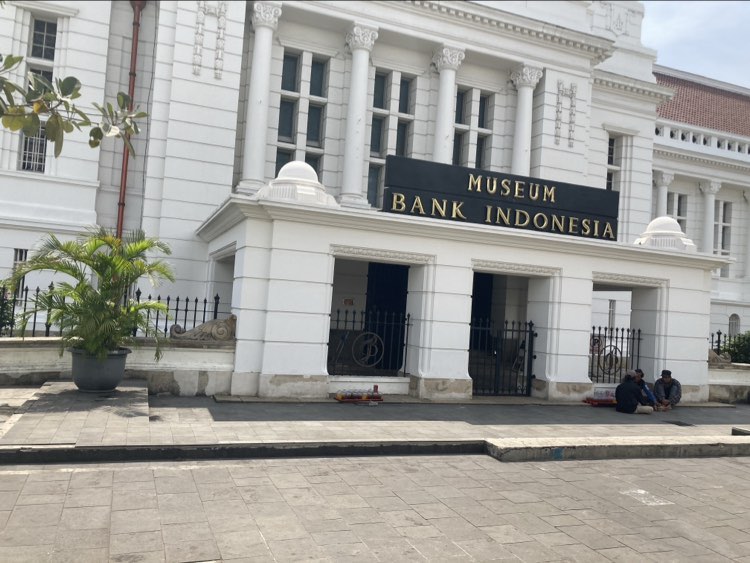
Guide For Visiting Museum Bank Indonesia – Tips and Insights
The Bank Museum Jakarta shows Indonesia’s rich financial heritage, if you are in Jakarta it’s worth a visit. It is located in the old town of Jakarta. Bank Museum, or in Indonesian: Museum Bank is also called Museum BI. Quick Facts About Bank Museum Jakarta A Glimpse into the Past Established in 2009, the Bank…
Leave a Reply Cancel reply
Your email address will not be published. Required fields are marked *
Save my name, email, and website in this browser for the next time I comment.
Let Ride & Roll with Castillan Tours
Step into our caruaje and Let us take you to Luneta, Intramuros & Fort Santiago
Welcome to Intramuros
Let Feel, Discover and Experience Life in the Walled City of Intramuros
Ready to begin your journey?
Click to Ride & Roll
Pepe and Friends (Tramvia)
Experience the Pepe and Friends at Rizal Park Manila
Explore 16th Century Manila Aboard Victorian Carriages
Come on-board our Victorian carriages/caruaje and explore 16th century Intramuros, a 64-hectare Spanish Walled City in the heart of the historic city of Manila, Philippines and go further beyond to enjoy the tourist attractions of the Pearl of the Orient aboard our tramvias or motorized tramcars. Nostalgic recollection of Manila’s more than 400 years of colorful history is guaranteed.
Company Profile
The Castillan Carriage Tour Assistance Services or simply Castillan Carriage Tours Manila is a tourism-oriented entity, F ounded in 1989 by a culture loving Filipino, Mr. Geronimo C. “Ronnie” Sta Maria , From a simple hobby, he developed it to a business enterprise, re invented and was able to perfect his antique inspired Carruajes , replicating the Spanish period carriages with a aesthetic expression for leisure ride and tourist conveyance in today’s modern setting. Decidedly, it is dedicated to show case the rich Filipino cultural heritage and colorful history though round about tours of the five century old Walled City of Intramuros and Rizal Park , facilitated by English speaking tour guides and proficient “kutseros”.
Today, it operates a fleet of carriages and motorized version of Tramvias thus Tramcar , patronized by both young and local foreign tourist. It is a regular fare in Manila as a tourist destination. As such, the Castillan Carriage became a valuable partner of the government in tourism development thru Department of Tourism , the Intramuros Administration and the National Park Development Council which the company is affiliatly working with.
In fulfillment of its social commitment, it also caters to special events , wedding services and educational tours to help the young generation of Filipinos to rediscover Intramuros, the cradle of Filipino nation, for them to relate and envive their patriotic identity.
The Intramuros Administration
The Intramuros Administration (IA) is a national government agency created on April 10, 1979 under Presidential Decree 1616. It is tasked to restore the Walled City of Intramuros and develop it into a prime urban tourist destination. Formerly under the defunct Ministry of Human Settlements, it was attached to the Department of Tourism by virtue of Executive Order 120 dated January 30, 1987. IA’s objective is to make this “city within a city” socially, economically and culturally viable while keeping pace with modernization. It is involved in restoration, urban renewal and income generation.
Today, IA makes the visit to the Walled City more enjoyable and educational. With 90% of its walls restored, Intramuros has become a busy cultural center for performing arts, exhibits, flea markets, book fairs, music and art contests and religious activities. The restored chambers of the gates have been converted into commercial establishments like food stalls and souvenir shops. Tourists can also visit antique and handicraft stores. For a nostalgic journey in touring the Walled City, IA has commissioned Castillan Carriage Tour Assistance Services to operate Victorian horse-drawn carriages, Spanish caruajes, Philippine calesas and motorized tramcars or tranvias inside Intramuros.
With IA as its handmaiden, Intramuros relives within its imposing walls the dramatic moments of Philippine past.
Guide to Fort Santiago, Intramuros, Manila
:max_bytes(150000):strip_icc():format(webp)/mike_borobudur-5b6d3ea446e0fb0025fcb683.jpg)
Michael Runkel/robertharding / Getty Images
The city of Manila's origins lies here, in a crumbling fortress north of the walled city of Intramuros near the mouth of the Pasig River.
Fort Santiago was built in the late 1500s to serve as a forward base for Spanish ambitions in the Far East. Over the centuries, Fort Santiago gained a fearsome reputation among Filipinos - the Philippine national hero Jose Rizal was imprisoned here immediately before his execution, and the Japanese massacred thousands here throughout their short but brutal occupation in the 1940s.
After near-total destruction at the hands of the Americans during World War II and ensuing decades of neglect, Fort Santiago is now slowly coming back to life.
Statuary Park: Plaza Moriones
Mike Aquino
The ticket counter that allows access to Fort Santiago is set at the gate of a large garden square called Plaza Moriones .
The plaza used to be a public square until the Spanish Guardia Civil fenced it off in 1864 after an earthquake. The space takes its name from the 87th Spanish Governor General of the Philippines, Domingo Moriones y Murillo. Moriones was a tough veteran of the Carlist Wars in Spain; upon his arrival in 1877, he ended a mutiny by decimating the rebellious regiment.
The wall along Plaza Moriones' western side—the Baluartillo de San Francisco Javier—was formerly used to store military supplies; presently the Intramuros Visitor’s Center occupies part of the former storage space in the walls, alongside an art gallery, souvenir shop, and café.
The plaza itself is an open garden with an array of life-size statuary around the fringes—monks, soldiers, and historical figures populate Plaza Moriones.
Under the Eyes of Saint James: Gate of Fort Santiago
The actual Fort Santiago doesn't begin until you cross the bridge across the moat from Plaza Moriones onto Fort Santiago's doorstep.
The intricately carved gate bears the royal seal of Spain and a wooden relief sculpture of St. James ( Santiago Matamoros , or Saint James the Moor-killer), the patron saint of Spain.
The relief sculpture depicts St. James crushing Muslims under his horse's hooves, an image that resonated particularly well with the Spanish conquistadores , who defeated Muslim natives to gain the site of Fort Santiago in battle.
Military Nerve Center: Plaza de Armas
Fort Santiago proper consists of a central plaza (Plaza de Armas) surrounded by walls and ruins of barracks and storehouses. Formerly the nerve center of the Spanish military presence in the Philippines, the fort has now been transformed into a tribute to its most famous prisoner, the Philippine national hero Jose Rizal. His statue stands at the very center of the plaza.
The fort's military barracks lies mostly in ruins, except for a section that has been transformed into the Rizal Shrine, a museum that chronicles Rizal's life, his untimely death at the hands of the Spanish, and the ripple effects of his martyrdom on the Philippine struggle for independence.
Remembering a Filipino Hero: Rizal Shrine
From November 3 to December 29, 1896, Jose Rizal was held in the Fort Santiago barracks on the western side of Plaza de Armas, where he was sentenced to death for supporting a brewing revolution against Spanish rule.
From Fort Santiago, Rizal was marched out through Postigo Gate to Bagumbayan field (the site of today's Rizal Park) and executed by firing squad on December 30, 1896.
Rizal's route as a dead man walking has been preserved as a series of bronze footprints leading out from Fort Santiago to the gate exiting Intramuros. The origin of the footprints—part of the old barrack—has been spruced up and transformed into the Rizal Shrine, where Rizal's life unfolds before the visitor.
Starting with a timeline of Rizal's life, the exhibit guides guests through numerous rooms depicting his martyrdom (complete with the only part of Rizal's anatomy viewable by the public, his bullet-shattered vertebra); a replica of the courtroom that decided his fate; and a room that features Rizal's legacy—from reproductions of his sketches and sculptures to his last poem engraved in marble and taking up an entire wall.
Intramuros' Darkest Dungeon: Bateria de Santa Barbara
The Baluarte de Santa Barbara, set at the extreme northwest of Fort Santiago, overlooks the Pasig River. The Falsabraga de Media Naranja, a semicircular gun platform now free of guns, extends in a semicircle over the water. Under the Baluarte lies the Bastion de San Lorenzo, which stored artillery and weapons in Spanish and American times.
The Bastion also doubled as a dungeon, where Jose Rizal was confined prior to his execution, and where thousands suffered lingering torture and death at the hands of the Japanese kempeitai during the short but brutal Japanese occupation of the Philippines. Many of these victims are commemorated through a cross that stands over a mass grave; this cross can be found overlooking the Plaza de Armas in front of the Bateria de Santa Barbara.
Getting to Fort Santiago, Intramuros, Manila
Fort Santiago's fearsome reputation hasn't stopped Filipinos from using it as a shrine to the country's history and culture. Tour guides like Carlos Celdran (pictured above) include Fort Santiago in their itineraries. (Find out about taking your own walking tour of the walled city .)
Fort Santiago is an eight-minute walk away from Manila Cathedral; travelers must cross Soriano Avenue, pursuing General Luna Street to its northernmost end where it intersects with Santa Clara Street. The entrance to Fort Santiago can be found here ( location on Google Maps ); visitors must pay PHP 100 (about $2.10) to enter.
Fort Santiago is open on all days of the week - from Tuesdays to Sundays, guests can enter from 8 am to 5 pm, with a one-hour break at 12 noon; on Mondays, the Fort is only open from 1 pm to 5 pm.
Walking Tour of Intramuros
Philippines' Top Churches
Top 10 Indispensable Intramuros, Philippines Stops
10 Things to Do in Luzon, the Philippines
13 Best Things to Do in Manila, the Philippines
Top 10 Things To Do in Veracruz
Cubas Capital City of Havana
Top Places to Visit in the Philippines
Philippines Fiestas
10 Best Things to Do in Tarazona, Spain
13 Best Things to Do in Iloilo, Philippines
20 Best Historic Things to Do in Texas
Learn All About El Morro, Puerto Rico's Most Popular Historic Site
Where to Go in 2023: The Most Exciting Destinations to Explore This Year
The 15 Best Things to Do in Alicante, Spain
The 15 Best Things to Do in Montevideo, Uruguay
Travel Guide: Fort Santiago in Intramuros, Manila
- shares
- Share on Facebook
- Share on Twitter
Fort Santiago in Intramuros, Manila
Table of Contents
Fort Santiago, an artifact of stone and memory, poses as both sentinel and sage. Its ramparts hold not only history’s remnants but also reflect the human journey. Each weathered stone seems to whisper a universal truth: that our pursuits, like its walls, stand against the relentless current of time. Within its confines, past and present coalesce, and we are reminded that the fort is not only a fortress of defense but a repository of wisdom. It urges us to contemplate the dual nature of preservation and impermanence, prompting introspection on how our lives intersect with the tides of existence.

In this article, you’ll be introduced to an immersive journey connecting the past and present, enriching you with insights and memories to cherish.

About Fort Santiago
Fort Santiago, established in 1571, stands as an enduring fortress crafted by Spanish navigator Miguel López de Legazpi for Manila’s protection. Nestled within Intramuros, Manila’s walled city, this citadel bears profound historical significance. It served as a somber prison, witnessing lives lost during the Spanish Empire and World War II. José Rizal, a revered Philippine hero, endured captivity here before his 1896 execution. The Rizal Shrine Museum echoes his legacy through a curated collection. Marking his final steps in bronze, the fort immortalizes his walk to the execution site. Adjacent to the Manila Cathedral and Palacio del Gobernador, Fort Santiago beckons with tales of courage and sacrifice.
Fort Santiago, established by the Spaniards in 1571, stands as one of Manila’s oldest defenses. Originally a palisaded structure built by Rajah Soliman on the native settlement of Maynila, it was strategically positioned at the juncture of the Pasig River and Manila Bay. The fort suffered destruction in 1574 during a Chinese assault led by Limahong. Between 1589 and 1592, a stone fort was constructed, later repaired and expanded after the 1645 earthquake.

Over time, the fort served as headquarters and prison for various occupying forces, including the Spanish, British, Americans, and Japanese. The Battle of Manila in 1945 caused severe damage, after which the fort was used as a depot by the U.S. Transportation Corps until it was returned to Philippine control in 1946.
In 1950, it gained the designation of Shrine of Freedom, paving the way for restoration efforts that commenced the following year. Today, Fort Santiago is a poignant memorial to World War II’s victims and the Filipino people’s unwavering pursuit of freedom.
Things to Do Inside Fort Santiago
Inside Fort Santiago’s venerable walls lies a spectrum of engaging activities. From exploring historical corridors to learning about national figures, you’ll absorb the essence of Philippine history. Walk through the architectural relics, hear the echoes of the past, and appreciate the serene surroundings. Fort Santiago is a hub for reflection, learning, and immersion in Manila’s heritage. Here are five activities to explore within its walls.
Statuary Park: Plaza Moriones

Discover a hidden gem within Fort Santiago: Statuary Park, also known as Plaza Moriones. As you step through the ticket counter, you’ll find yourself in a spacious garden square brimming with history. Once a vibrant public square, it was enclosed by the Spanish Guardia Civil in 1864 after an earthquake. Named after the 87th Spanish Governor General, Domingo Moriones y Murillo, this place holds tales of his formidable leadership during the Carlist Wars in Spain. With a past rooted in strength and resilience, Plaza Moriones now invites you to explore its intriguing facets.
Wander along the western wall, formerly a military supply storage known as Baluartillo de San Francisco Javier, where today’s Intramuros Visitor’s Center, art gallery, souvenir shop, and café await. Amidst the lush openness of the garden, life-size statuary depicting monks, soldiers, and historical figures stand as silent witnesses to the rich stories this plaza holds.
Appreciate the Gate of Fort Santiago

Step into a world of storied valor as you approach the gate that guards the heart of Fort Santiago. The very gate that withstood the tempestuous tides of history, surviving the fierce Battle of Manila in 1945, stands before you. Behold its magnificent adornments: a wood relief carving depicting Santiago Matamoros, the legendary “Moor-slayer,” Spain’s revered patron saint, and alongside, the regal insignia of the Kingdom of Castile and Leon, tracing lineage through time.
Traces of antiquity linger in the embossed figures of Spanish soldiers, their visages weathered by ages. Gaze upon St. James, emblem of Spanish dominion, gracing far-flung lands like Chile and Mexico, bearing witness to an enduring legacy.
See Plaza de Armas

Nestled within Fort Santiago, the Plaza de Armas takes center stage. This name is a familiar hallmark in Spanish colonies, denoting a place to store arms and rifles when idle. Here, soldiers once conducted their drills, shaping its role as a training hub. Amid Intramuros, Manila, it remains the beating heart of Fort Santiago. Paired with Plaza de Roma and Plaza Moriones, it forms a trio of significant sites, their stories intertwined. Often mistaken, these plazas contribute to the intricate historical fabric of Manila.
Learn More About Jose Rizal at Rizal Shrine

The Rizal Shrine, also known as the Museo ni José Rizal Fort Santiago, is a museum honoring the legacy of José Rizal. Found within Fort Santiago in Intramuros, Manila, it stands adjacent to the Plaza de Armas. Originally a barracks for Spanish artillery soldiers during colonization, it now houses the museum. This building held significance as the place where Rizal spent his final night and concealed his renowned poem Mi último adiós within an oil lamp, later passed to his sister. An array of memorabilia, including shells from Dapitan, books, manuscripts, and artworks, are showcased within its walls. In 2014, the National Historical Commission of the Philippines renovated the museum to engage a younger audience.
See the Bateria de Santa Barbara
Constructed in 1593, Baluarte de Santa Barbara stands as a stone bastion integral to the Santiago Fort in Manila. A witness to World War II’s echoes, it bears the weight of history’s harsh treatment towards its wartime detainees. Originally an ammunition and arms repository, it later transformed into a prison, where stories of fatalities during floods and high tides linger. An important landmark, this bastion invites you to glimpse into Manila’s past as you traverse its grounds.
How to Get There
The most efficient route to Fort Santiago is through guided Old Manila tours or by public transport. If you opt for public transportation, the LRT is a convenient choice. Disembark at Central Station and take a brief stroll to the Fort Entrance. Alternatively, alight at Carriedo Station and catch a jeepney bound for Mabini, which will take you to your destination.
Entrance Fees
The entrance fees for Fort Santiago were as follows:
- Adults: PHP 75
- Students (with valid ID): PHP 50
Manila Travel and Tour Packages
Want more updates about new package tours and tourist attractions in Manila that you can add to your itinerary? Follow the Out of Town Travel Blog on Facebook , Twitter , Instagram , and Pinterest if you want more travel and food-related updates.
- 10 Philippine Festivals You Shouldn’t Miss in Your Entire Life
- Intramuros Walking Tour: Re-discover Manila’s Old World Charm
- Camino de Santiago Day 1: Pilgrimage to Santiago de Compostela
Written by Melo Villareal
Melo Villareal is the Online Publisher of Outoftownblog.com. He is an Accountant by profession who left the corporate world at the age of 23 to explore his beautiful country and the rest of the world. Today, Melo works as a part-time Social Media Manager for local and international clients. His full-time work focuses on discovering interesting culture, explore different cuisines and take memorable photos from local and international destinations he's visiting.
What do you think?

Amarela Resort Art Gallery: A Haven for Art Lovers

14 Best Things to do in Lyon + Tourist Spots & Places to Visit
© 2024 by Team Out of Town
With social network:
Or with username:.
Username or Email Address
Remember Me
Forgot password?
Enter your account data and we will send you a link to reset your password.
Your password reset link appears to be invalid or expired.
Privacy policy.
To use social login you have to agree with the storage and handling of your data by this website. Privacy Policy
Add to Collection
Public collection title
Private collection title
No Collections
Here you'll find all collections you've created before.
Philpad » Travel » Intramuros and Fort Santiago Tour with latest Photos
Intramuros and Fort Santiago Tour with latest Photos
I made this hub as a virtual field trip to Intramuros and Fort Santiago in Manila. See the two most historical places and what they look like now. The photos were from our latest tour in Manila, Philippines.

Intramuros is the Latin word that means “ within the walls ” thus Intramuros is known as the “ Walled City .” It is also known as the original Manila for it was the country’s capital during the late 16 th century Spanish colonial era . The Philippines at that time was the most distant point of the empire of Madrid in the Far East. Intramuros was built and erected as defensive walls to protect the city from foreign invasions which were very vigorous at that time.
Also at that time, Manila became so famous during the lucrative Manila-Acapulco Galleon Trade (established in 1565) which lasted for three centuries. They traded goods and spices from China, India, Mexico, Peru and other Asian countries in exchange for European wares.
Table of Contents:
Intramuros and Fort Santiago Tour
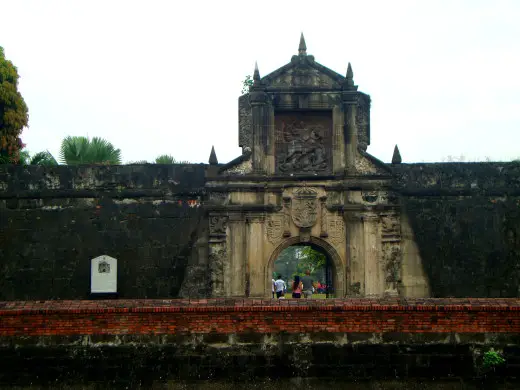
Fort Santiago was the premiere defense fortress of Intramuros. It was named after Saint James the Great, thus Santiago . It also became the main fort of the Manila-Acapulco Galleon Trade. The Philippines’ national her, Dr. Jose P. Rizal , was imprisoned at Fort Santiago before he was executed in 1896. Inside the fort, there is Rizal Shrine museum containing some memorabilia and important artifacts from the Spanish period and Rizal’s time.
Intramuros and Fort Santiago became a big part of the Philippine history. They have seen over four hundred years of heritage so we must continue to protect them.
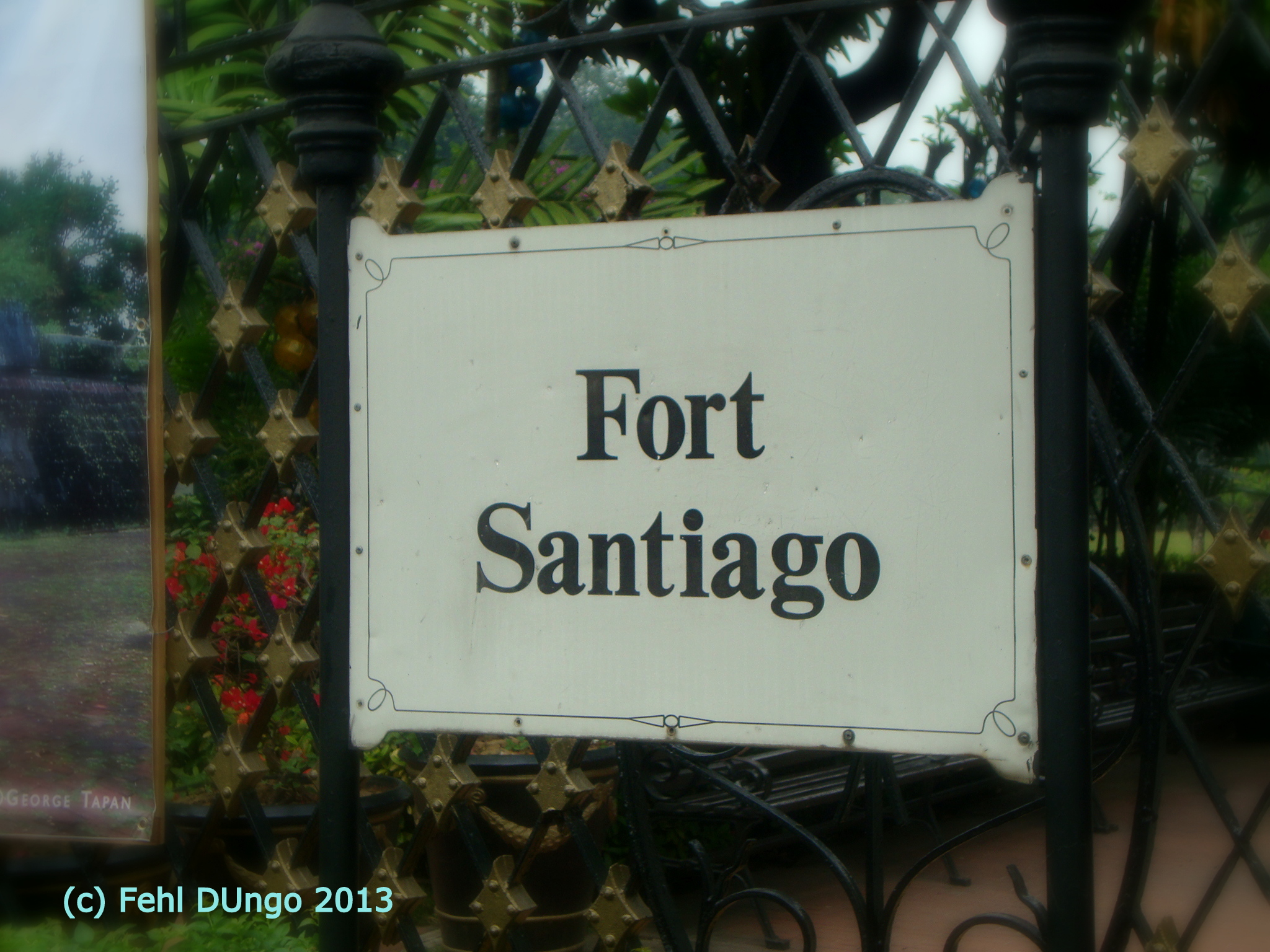
How much is the Entrance Fee in Fort Santiago?
So cheap and affordable, it’s only P75 when we visited there. If you are on a group like school field trip and excursion, I’m sure they will give big discount for the tickets. I think for students, ticket is only P50.
How to go to Intramuros and Fort Santiago?
Simply go to Roxas Boulevard or Luneta (Rizal Shrine), you’ll see Intramuros Walls right away. If you are commuting, I suggest you take LRT and stop by UN Station and take a jeep passing by Roxas Blvd. There are also shuttle services available for the tour all over the Rizal Park.

Outside Fort Santiago, you’ll see some buildings and structures designed and built in the 15th and 16 century when Manila was under the Spanish supremacy. Some buildings are still named in Spanish up to now.

As you see in the photo, here is the famous “ Kalesa .” There are many of these all over Intramuros, Manila. It’s so relaxing to ride in one while exploring around Intramuros. Inside Fort Santiago, there are also carriages available for hire – for 30 minutes or even 1 hour of travel.
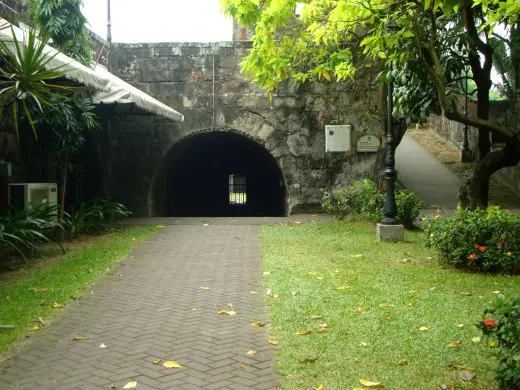
The park is well maintained and cleaned now.The view outside is amazing too plus golf courses are nearby the walls of the park. It’s cool to go and visit here when the place is not so crowded from school same fieldtrips schedules.
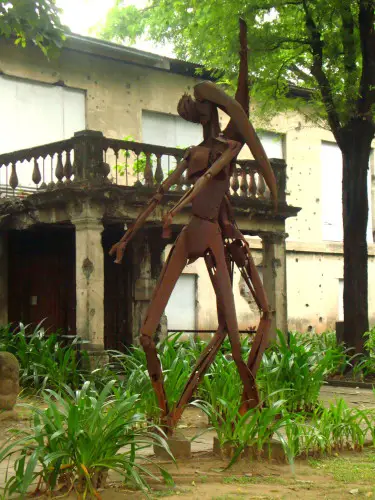
For some reasons, ex-president Elpidio Quirino was in-captive in this building for 16 days when he was still a senator in 1943. I took a shot of this interesting artwork though because I loved it. I was unable to find out who the artist behind this amazing creation. How amazing!
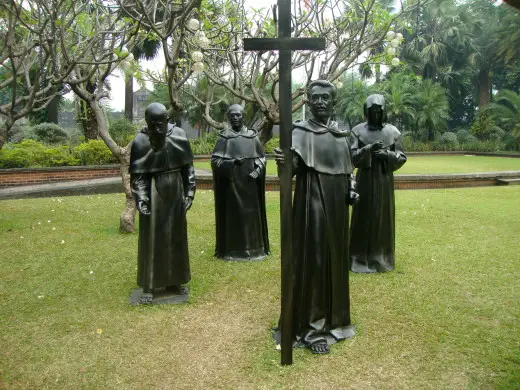
These are the famous GOMBURZA – martyr priests Gomez, Burgos and Zamora.
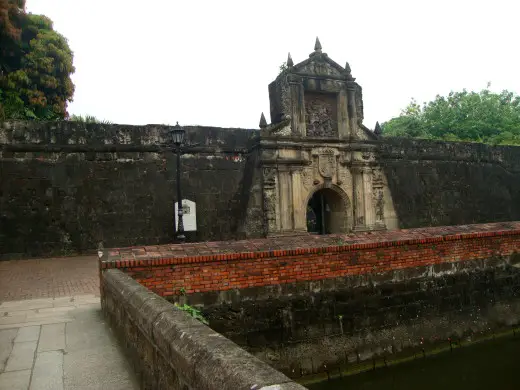
at the entrance of the citadel
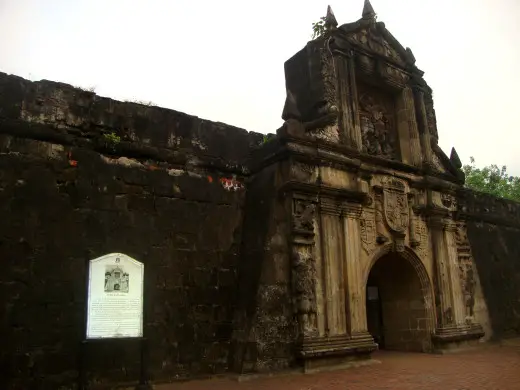
Arch of Fort Santiago is marked by St. James the Great. I was amazed that a great artist of Pampanga, Wilfredo Layug of Betis, did the wood carving. Wow!
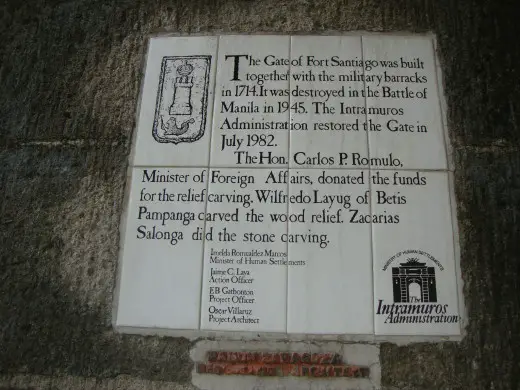
Rizal Shrine inside Fort Santiago has a museum
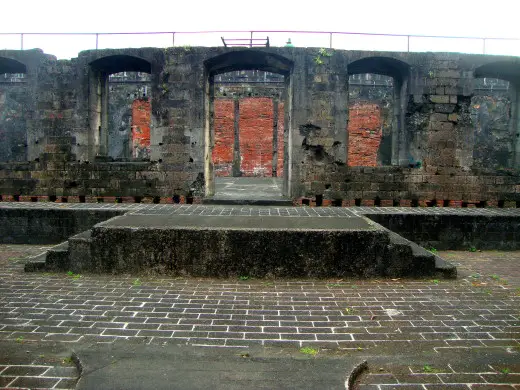
inside the 16th century fort
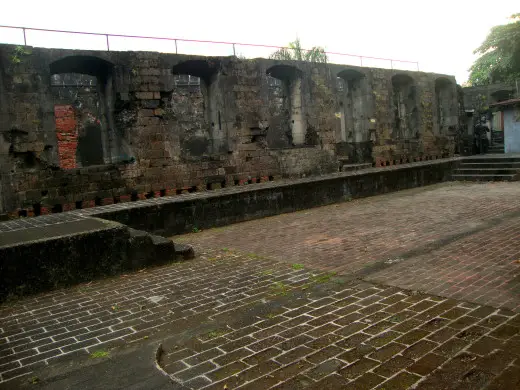
Jose Rizal’s Last Walk to Martyrdom Trail in Fort Santiago
“To commemorate the centennial of Dr. Jose Rizal’s martyrdom, the National Centennial Commission and the Department of Tourism have included Rizal’s shoeprints embedded in the pavement and placed markers in areas where he passed on his way to Bagumbayan from his cell in Fort Santiago. Marking his last walk to martyrdom, this centennial freedom trail memorializes his brave path to martyrdom in the early hours of December 30,1896 and symbolizes the birth of Filipino nation.” – Fort Santiago

As shown, Jose Rizal before his final hours. Jose Rizal’s last foot prints in Fort Santiago started here (in this cell)
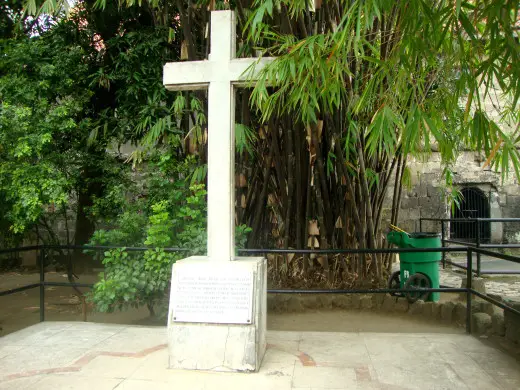
This cross marks the final resting place of approximately 600 Filipinos and Americans who were victims during February 1945…
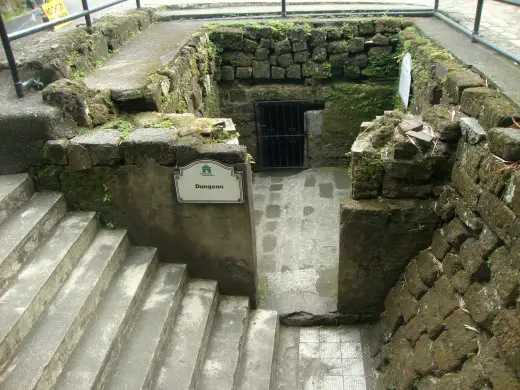
View up on the walls
Hope you have enjoyed the tour here. See ya next time! Subscribe to us to receive our new posts here at Philpad. Thanks!
Share this!
Related posts.

Top 15 Reasons Why You Should Retire in the Philippines in 2024

22 Amazing Tourist Spots in the Philippines that Look Like Foreign Attractions

Philippine Airlines Promo 2020: How to Book Cheap Tickets Successfully

How to Get a JR Pass (Japan Rail Pass) in the Philippines
Fehl is the founder of Philpad. She has a degree in Accountancy and a background in Finance. She is a licensed Career Service Professional and author of a poetry book at Barnes & Noble. In her spare time, she likes to travel and vlog.
1 thought on “Intramuros and Fort Santiago Tour with latest Photos”
may I ask if how can we reserve dates here to conduct a tour?
target date will be on March 18 , 2016 (friday)
hoping for your reply.
thanks! God bless!
Leave a Comment Cancel reply
Notify me of follow-up comments by email.
Notify me of new posts by email.

The Fort Santiago
Relive the history of old Manila
Entrance Rates
14 Feb 2023 | Free Guided Tour
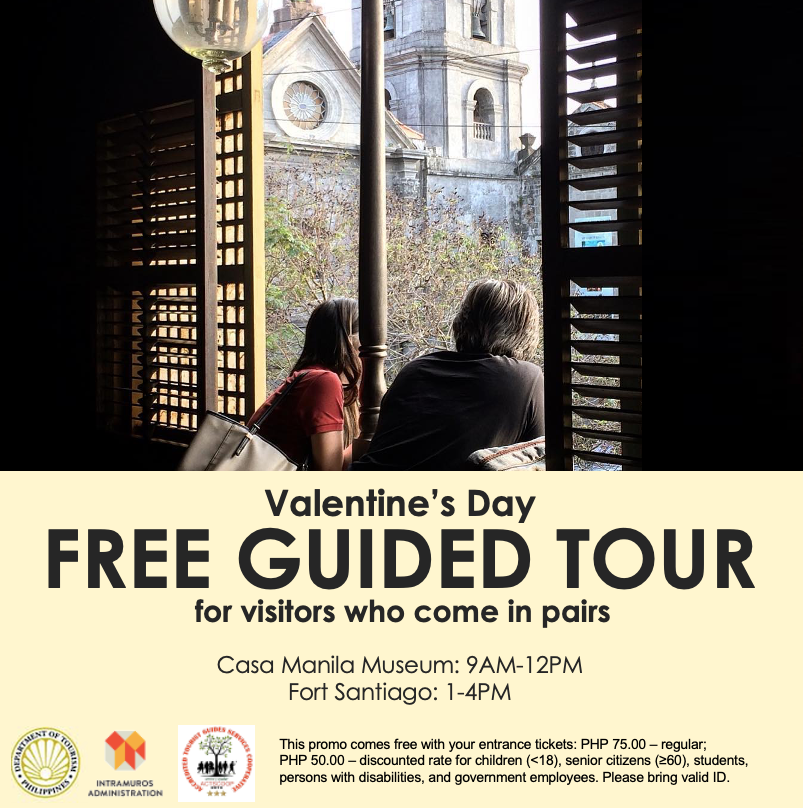
FREE GUIDED TOUR
- Date: February 14, 2023
- Casa Manila : 9:00 a.m. to 12:00 p.m.
- Fort Santiago : 1:00 to 4:00 p.m.
- This promo comes free with your entrance tickets: PHP 75.00 (regular), PHP 50.00 (discounted). Discounted rate is for children (<18), senior citizens (≥60), students, persons with disabilities, and government employees. Please bring valid ID.
- Fort Santiago tour is good for at least one (1) hour.
- Casa Manila Museum tour is good for at least thirty (30) minutes.
- Guests may come at any time within the Free Guided Tour schedule. Pre-registration not required.
Privacy Overview

IMAGES
VIDEO
COMMENTS
Welcome to Fort Santiago! In 1571, Spanish conquistador Miguel Lopez de Legazpi re-established Rajah Soliman's Manila as the new capital for the growing Spanish empire in the Far East, while the fallen rajah's wooden citadel was rebuilt as the headquarters for Spain's military. ... 14 Feb 2023 | Free Guided Tour. read more. Welcome to ...
Fort Santiago Gate. Here stands the gate leading to the inner sanctum of Fort Santiago. The gate of Fort Santiago was destroyed during the Battle of Manila in 1945. ... Watch our Virtual tour! A national shrine and a landmark today, Fort Santiago has stood witness to numerous events in our pre-hispanic and colonial history, as well as our ...
Fort Santiago is the oldest Spanish bastion in the Philippines. Situated inside the walled city of Intramuros in Manila, the site witnessed many historical events of the Philippines. The exact spot where Fort Santiago now stands was once a Muslim kingdom ruled by a chieftain named Rajah Sulayman. When the Spaniards landed in the Philippines in ...
Itinerary: Fort Santiago, Old City Walls, Plaza Roma, Manila Cathedral, San Agustin, Barrio San Luis. Tour duration: 2 to 2.5 hours. Rates: PHP 1,750/head; PHP 1,950.00 on Weekends and Holidays; PHP 1,800.00/head night tour (after 5:00PM). Rates subject to change at any time. Go here for more information.
According to Tripadvisor travelers, these are the best ways to experience Fort Santiago: Manila Old and New: Sightseeing Tour Including Intramuros and Fort Santiago (From $60.00) Experience Intramuros with Bamboo Bicycle - Ecotours (From $37.34) Manila Super Saver: Manila Sightseeing plus Tagaytay Tour with Taal Volcano (From $160.00)
Fort Santiago is one of the most common destinations for educational tours or field trips. I have scoured the nooks and crannies of Fort Santiago a few times already, once doing a photo walk for my Photography Class back in college. ... tour inquiries, and other marketing-related activities); (02) 527-3096 and (02) 527-9012 (Business Management ...
Our most recommended Fort Santiago Tours. 1. Manila: Old & New 4-Hour City Tour. Come along for a tour of Manila's past and present. The tour starts right in the heart of the country's financial center - the City of Makati. First stop is Nielsen's Tower along Ayala Boulevard. Drive through Forbes Park, an exclusive residential enclave ...
Manila Old and New: Sightseeing Tour Including Intramuros and Fort Santiago. 233. Discover the top sights of Manila on a 4-hour sightseeing tour by coach with an expert guide. Take in the City of Makati and Old Manila, including landmarks such as Nielson Tower, American Cemetery and Memorial and the old walled city of Intramuros.
Fort Santiago: Our most recommended tours and activities. 1. Manila: Historical Bamboo Bike Tour in Intramuros. Get on your bamboo bike made by local craftsmen to explore all major historical sites of Intramuros, the historical district of Manila. Start your tour by picking the best bambike that fits you.
Fort Santiago, located in the heart of Manila's historic Intramuros district, is a symbol of the Philippines' rich and turbulent history. It's a must-visit in Manila, and you should plan to spend about one hour. ... Several guided tours include Fort Santiago in their itinerary, which is a convenient way to reach the site while learning ...
Come on-board our Victorian carriages/caruaje and explore 16th century Intramuros, a 64-hectare Spanish Walled City in the heart of the historic city of Manila, Philippines and go further beyond to enjoy the tourist attractions of the Pearl of the Orient aboard our tramvias or motorized tramcars. Nostalgic recollection of Manila's more than ...
Tour guides like Carlos Celdran (pictured above) include Fort Santiago in their itineraries. (Find out about taking your own walking tour of the walled city .) Fort Santiago is an eight-minute walk away from Manila Cathedral; travelers must cross Soriano Avenue, pursuing General Luna Street to its northernmost end where it intersects with Santa ...
The Intramuros and Fort Santiago Walking Tour is available for a duration of 2 hours and offers various starting times for participants to choose from. This allows visitors to conveniently fit the tour into their schedule. It's important to note that the duration of the tour may vary based on the group size and pace.
Walk through Intramuros to see UNESCO World Heritage sites including San Agustin Church and Fort Santiago, and learn about the nation's history and heroes like Dr Jose Rizal. You'll gain insight into the Philippine's history, the Spanish colonial era and vibrant modern-day Manila. 4-hour guided sightseeing tour of Manila's past and present.
One of the most important historical sites in Manila, Fort Santiago was built by a Spanish conquistador to protect the newly formed city. The fort is a key feature of the famous walled city known as Intramuros, a complex of manicured gardens, fountains, lily ponds, and sunny plazas, as well as the Rizal Shrine Museum, as well as a Manila city tour highlight.
The present fort, constructed using volcanic tuff (adobe), was built between 1589 and 1592. It was named after St. James the Moor-slayer, known by the Spanish as Santiago Matamoros. The fort is notable for being a headquarters of the armies of several foreign powers in Philippine history, including the Spanish (1571 to 1898), the British (1762 ...
According to Tripadvisor travelers, these are the best ways to experience Fort Santiago: Manila Old and New: Sightseeing Tour Including Intramuros and Fort Santiago (From ₱3,365.87) Experience Intramuros with Bamboo Bicycle - Ecotours (From ₱2,094.69) Manila Super Saver: Manila Sightseeing plus Tagaytay Tour with Taal Volcano (From ₱8,975.65)
Appreciate the Gate of Fort Santiago The Gate of Fort Santiago By Jorge Láscar from Melbourne, Australia - The Gate of Fort Santiago, CC BY 2.0 cc ... The most efficient route to Fort Santiago is through guided Old Manila tours or by public transport. If you opt for public transportation, the LRT is a convenient choice. Disembark at Central ...
A national shrine and a landmark today, Fort Santiago has stood witness to numerous events in our pre-hispanic and colonial history, as well as our people's ...
A complete walking tour of Fort Santiago located inside Intramuros, Manila. It is open daily from 8am to 11pm. The ticket booth at the entrance only sell tic...
Fort Santiago Guided tours. Our most recommended Fort Santiago Guided tours. 1. Manila: Historical Bamboo Bike Tour in Intramuros ...
Intramuros and Fort Santiago Tour. Fort Santiago was the premiere defense fortress of Intramuros. It was named after Saint James the Great, thus Santiago. It also became the main fort of the Manila-Acapulco Galleon Trade. The Philippines' national her, Dr. Jose P. Rizal, was imprisoned at Fort Santiago before he was executed in 1896.
Fort Santiago: 1:00 to 4:00 p.m. This promo comes free with your entrance tickets: PHP 75.00 (regular), PHP 50.00 (discounted). Discounted rate is for children (<18), senior citizens (≥60), students, persons with disabilities, and government employees. Please bring valid ID. Fort Santiago tour is good for at least one (1) hour.